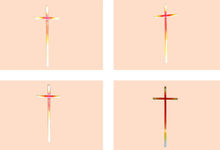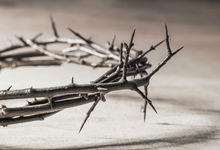Good Friday: paid in full
Sometimes a few words suffice to explain a complicated matter. And sometimes even a single word is enough! One with a particularly powerful meaning. Can Good Friday be explained in one word? It is worth a try.

Good Friday is the day on which Jesus of Nazareth breathed His last. He had been nailed to the cross to die and as a demonstration of power. A treacherous and hidden murder would not have sufficed; His death had to be public to entertain the crowds. How do the reporters in the gospels deal with this issue? Did they unravel a long tale of suffering, write a novel, and cast the leading and supporting roles?
Only a few pages report on the death of Jesus: one or two chapters in each the four gospels. And these are loaded to the point that they are still remembered today. Jesus’ death is agenda, life motto, quintessence, and quasi the gospel within the gospel.
“The hour has come”
This statement does not bode well. When someone’s time is up, they no longer have an influence on what happens next. In the book of life, the last chapter begins. When Jesus spoke these words, His disciples were asleep in the grass, refusing to keep vigil with Him. The night in which Jesus is betrayed is His loneliest night.
And then comes the fateful hour: all hell breaks loose, the persecutors begin to howl. Cynicism, jealousy, hatred, lust for power make a deadly mix. The showdown begins. How must a person feel who is handed over, who loses his human rights, and is thrown into a spiral of violence and terror? What does this Jesus do with it all? How does He defend Himself against it?
“Father, forgive them”
These are just a few words, gentle words of forgiveness. And yet He could have said so much! Pilate had interrogated Him and asked Him the most important question of all: by whose authority was He taking all of this upon Himself. Jesus reaction was forgiveness, without distinction of person, without calculation.
tetelestai
And here it is, this one word, the last word that describes Good Friday in its full magnitude: tetelestai, as it says in the original Greek version of the biblical passage according to John. It has been translated as “it is finished”, which is the literal translation. tetelestai means to bring to an end, to fulfil, to pay for. The word also indicated that something had been paid in full. Jesus suffered on our behalf, His death paid our ransom. “…having wiped out the handwriting of requirements that was against us, which was contrary to us. And He has taken it out of the way, having nailed it to the cross” (Colossians 2: 14).
This is a word that explains everything: pain ceases to be in vain. A new rainbow of God’s love emerges for mankind. Jesus died so that what cannot be any more devastating is buried: despair. When everything perishes and sinks, God’s eternal plan of love for humanity remains valid. This one little word is the gospel within the gospel. The path of suffering reaches the home stretch, a plan is brought to completion. With this word the world will not go under, but a new one will emerge.
What’s next?
What is finished? Many will have asked themselves this question. What exactly Jesus finished and accomplished is something we humans will never quite be able to fully understand. He literally went through hell to save us from it. Good Friday gives us answers: death is not threatening because a new life can begin. The door of death only opens on to the passageway that leads us to our very origin: God’s throne. Good Friday opens heaven, the Easter sun can be seen rising on the horizon.
Photo: kangnam - stock.adobe.com









